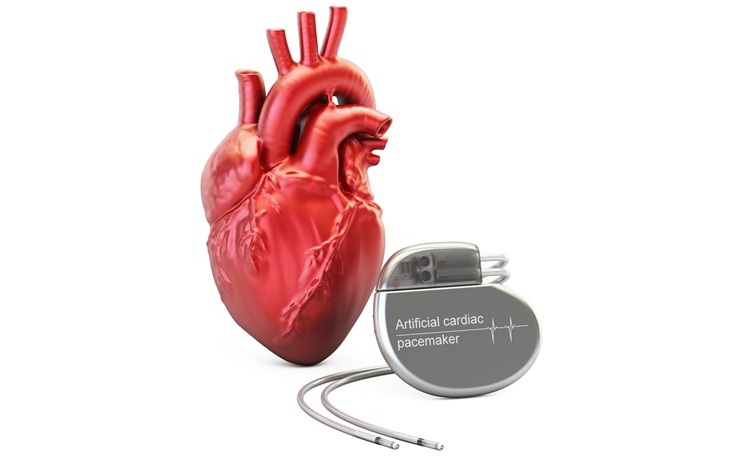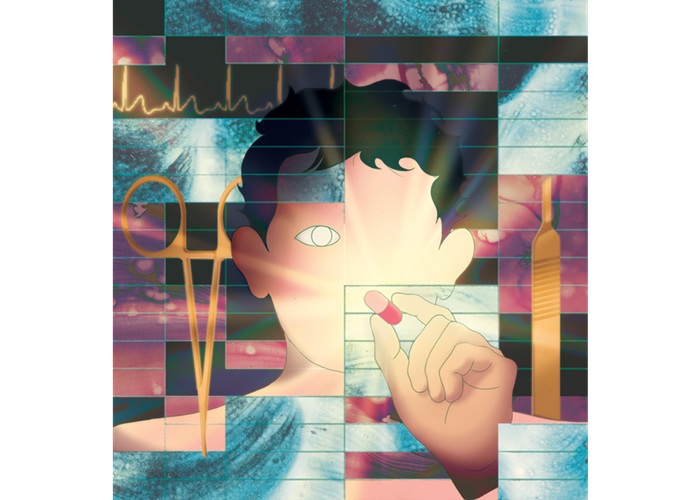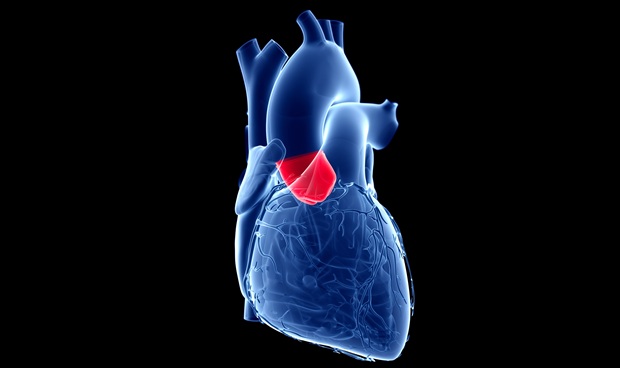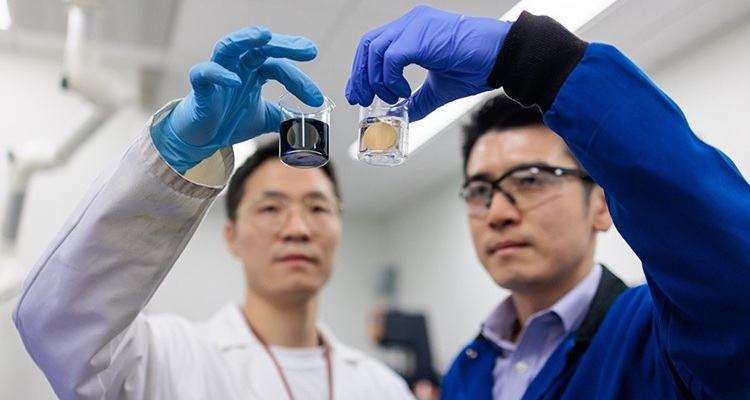Sterilization Technology Kills Hospital Bedbugs
|
By HospiMedica International staff writers Posted on 08 May 2013 |

Image: The AsepticSure portable sterilization system (Photo Courtesy of Medizone International).
A new hospital sterilization system eradicates highly drug-resistant bacteria as well as a problem increasingly plaguing hospitals—bedbugs.
The AsepticSure sterilization system is a portable, affordable, easily operated system that is placed in the center of the room scheduled to be cleaned. The room vents and doors are then sealed with a cleanly removable adhesive tape product. The system is then turned on from outside of the room through a remote wireless computer interface, and the room is filled with a patented ozone-based gas formula with specific humidity and charge strength.
Following the charge period, the sterilization process is remotely turned off and a separate technology is employed that restores the atmosphere inside the room. The end result leaves the treated room sterile of pathogens with a sweet, fresh oxygen-charged atmosphere. Turnaround time for reuse of rooms up to 113 cubic meters in size is 80–90 minutes; this includes decontamination of carpets, drapes and medical equipment, all to the 6 log sterilization standard. The AsepticSure sterilization system is a product of Medizone International (San Francisco, CA, USA).
“The bedbugs, and particularly the eggs of bedbugs, are even harder to kill than the spores of the bacteria,” said Professor Dick Zoutman, MD, an infectious disease specialist at Queen’s University (Ontario, Canada), and chief medical officer of Medizone International. “Medizone is now working to adapt the system to kill bedbugs in a faster and more effective manner, both for hospitals and other settings as well.”
More than a third of pest-management companies treated bedbug infestations in hospitals in 2012, 6% more than the year before and more than twice as many as in 2010, according to a survey released today by the National Pest Management Association (Fairfax, VA, USA). While bedbugs do not transmit infections to humans, their bites can lead to secondary infections when victims scratch, opening themselves up to bacteria. This is especially problematic in hospitals, where there is a greater likelihood of infection with Methicillin-resistant Staphylococcus aureus (MRSA).
Related Links:
Medizone International
National Pest Management Association
The AsepticSure sterilization system is a portable, affordable, easily operated system that is placed in the center of the room scheduled to be cleaned. The room vents and doors are then sealed with a cleanly removable adhesive tape product. The system is then turned on from outside of the room through a remote wireless computer interface, and the room is filled with a patented ozone-based gas formula with specific humidity and charge strength.
Following the charge period, the sterilization process is remotely turned off and a separate technology is employed that restores the atmosphere inside the room. The end result leaves the treated room sterile of pathogens with a sweet, fresh oxygen-charged atmosphere. Turnaround time for reuse of rooms up to 113 cubic meters in size is 80–90 minutes; this includes decontamination of carpets, drapes and medical equipment, all to the 6 log sterilization standard. The AsepticSure sterilization system is a product of Medizone International (San Francisco, CA, USA).
“The bedbugs, and particularly the eggs of bedbugs, are even harder to kill than the spores of the bacteria,” said Professor Dick Zoutman, MD, an infectious disease specialist at Queen’s University (Ontario, Canada), and chief medical officer of Medizone International. “Medizone is now working to adapt the system to kill bedbugs in a faster and more effective manner, both for hospitals and other settings as well.”
More than a third of pest-management companies treated bedbug infestations in hospitals in 2012, 6% more than the year before and more than twice as many as in 2010, according to a survey released today by the National Pest Management Association (Fairfax, VA, USA). While bedbugs do not transmit infections to humans, their bites can lead to secondary infections when victims scratch, opening themselves up to bacteria. This is especially problematic in hospitals, where there is a greater likelihood of infection with Methicillin-resistant Staphylococcus aureus (MRSA).
Related Links:
Medizone International
National Pest Management Association
Latest Patient Care News
- Revolutionary Automatic IV-Line Flushing Device to Enhance Infusion Care
- VR Training Tool Combats Contamination of Portable Medical Equipment
- Portable Biosensor Platform to Reduce Hospital-Acquired Infections
- First-Of-Its-Kind Portable Germicidal Light Technology Disinfects High-Touch Clinical Surfaces in Seconds
- Surgical Capacity Optimization Solution Helps Hospitals Boost OR Utilization

- Game-Changing Innovation in Surgical Instrument Sterilization Significantly Improves OR Throughput
- Next Gen ICU Bed to Help Address Complex Critical Care Needs
- Groundbreaking AI-Powered UV-C Disinfection Technology Redefines Infection Control Landscape
- Clean Hospitals Can Reduce Antibiotic Resistance, Save Lives
- Smart Hospital Beds Improve Accuracy of Medical Diagnosis
- New Fast Endoscope Drying System Improves Productivity and Traceability
- World’s First Automated Endoscope Cleaner Fights Antimicrobial Resistance
- Portable High-Capacity Digital Stretcher Scales Provide Precision Weighing for Patients in ER
- Portable Clinical Scale with Remote Indicator Allows for Flexible Patient Weighing Use
- Innovative and Highly Customizable Medical Carts Offer Unlimited Configuration Possibilities
- Biomolecular Wound Healing Film Adheres to Sensitive Tissue and Releases Active Ingredients
Channels
Critical Care
view channel
Algorithm Predicts and Lengthens Pacemaker Battery Life
Selecting the right pacemaker and programming its functions is critical for long-term heart rhythm management — yet battery life varies widely depending on how the device is set up. With pacemakers lasting... Read more
Novel Pill Could Mimic Health Benefits of Bariatric Surgery
More than 37 million Americans live with type 2 diabetes, the seventh leading cause of death in the United States. While lifestyle changes and insulin therapy can help manage the condition, bariatric surgery... Read more
AI Models Identify Patient Groups at Risk of Being Mistreated in Hospital ED
Triage errors in emergency departments can have life-or-death consequences, but identifying the root causes behind these errors has long been a challenge. Now, a team of researchers has applied machine... Read more
CPR Guidelines Updated for Pediatric and Neonatal Emergency Care and Resuscitation
Cardiac arrest in infants and children remains a leading cause of pediatric emergencies, with more than 7,000 out-of-hospital and 20,000 in-hospital cardiac arrests occurring annually in the United States.... Read moreSurgical Techniques
view channel
Tiny 3D Printer Reconstructs Tissues During Vocal Cord Surgery
Stiff vocal folds are a common complication after vocal cord surgery, affecting how patients speak and recover. Hydrogels can help reduce this risk by supporting tissue healing, but delivering them precisely... Read more
Minimally Invasive Procedure for Aortic Valve Disease Has Similar Outcomes as Surgery
Diagnosing and deciding how best to treat severe aortic valve stenosis is a critical challenge, especially as the number of affected patients grows with age. Clinicians have long relied on open-heart surgery... Read moreHealth IT
view channel
Printable Molecule-Selective Nanoparticles Enable Mass Production of Wearable Biosensors
The future of medicine is likely to focus on the personalization of healthcare—understanding exactly what an individual requires and delivering the appropriate combination of nutrients, metabolites, and... Read moreBusiness
view channel
Philips and Masimo Partner to Advance Patient Monitoring Measurement Technologies
Royal Philips (Amsterdam, Netherlands) and Masimo (Irvine, California, USA) have renewed their multi-year strategic collaboration, combining Philips’ expertise in patient monitoring with Masimo’s noninvasive... Read more
B. Braun Acquires Digital Microsurgery Company True Digital Surgery
The high-end microsurgery market in neurosurgery, spine, and ENT is undergoing a significant transformation. Traditional analog microscopes are giving way to digital exoscopes, which provide improved visualization,... Read more
CMEF 2025 to Promote Holistic and High-Quality Development of Medical and Health Industry
The 92nd China International Medical Equipment Fair (CMEF 2025) Autumn Exhibition is scheduled to be held from September 26 to 29 at the China Import and Export Fair Complex (Canton Fair Complex) in Guangzhou.... Read more














